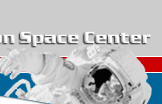NASA Shuttle-Mir Oral
History Project
Edited Oral History Transcript
Anatoli
V. Lomanov
Interviewed by Rebecca Wright
Cape Canaveral, Florida – 31 May 1998
Interviewers:
Rebecca Wright, Paul Rollins, Mark Davison
[Interview conducted with interpreter from TTI]
Translater: This interview is between Anatoli Lomanov and Rebecca
Wright. Today's date is May 31 [1998].
Wright [to the translater]: Would you please ask
him to briefly explain his roles and duties with the Mir-Shuttle Program?
Lomanov: I'll try. My official duty has been designated by the Team
Zero Phase 1 is the deputy director of the program in coordination
and organization of work. The contract which stipulates our work is
a big document. It has also a number of attachments which stipulate
the organization of the work designated by the contract.
The contract is divided into two phases, two parts. As you already
know, Phase 1 is the Mir-Shuttle, Mir-NASA Program. The Phase Two
is the International Space Station. So Phase 1 now mostly works with
the Mir-NASA Program. Mir-Shuttle was in the earliest stages. The
main document which we conduct our work based on is the main attachment
to the contract, and it's called J-4. I couldn't demonstrate it to
you--I don't have it--what a lengthy document it is. It contains about
1,000 line items with due dates for their completion. It also has
the cost. Of course, the main objective is to conduct all the work
stated in this attachment timely and efficiently. This contract stipulates
that we provide supplies, equipment, and documents as well as line
items.
So in the very beginning of our joint work, Team Zero designated a
Russian person who will oversee the timely processing of the contract
and the fulfillment of all the obligations stipulated in each line
item. Organizationally, Team Zero is divided in subteams. Each team
has its own scope of objectives. You have already familiarized yourself
and met a few of the heads of these subgroups, who told you about
their duties and what they do in the course of this program.
Specifically to describe our work now, our main document which stipulates
our work, we developed a main joint milestone schedule. We developed
this document about four years ago. This was a joint effort of American
and Russian experts. It was a very difficult and lengthy process of
concurrence, because this document illustrated each side's obligations.
These obligations had specific due dates which were tied to line items
in the contract. This is a great organizational work.
You understand that all the work is planned, controlled, and has to
be executed. Bearing in mind all our work conditions and all our work,
sometimes it becomes quite difficult, but, nevertheless, all our joint
work in preparing for each of the flights of the program have been
very successful. We never had big delays. We understood each other,
assisted each other, and we found common denominators and common decisions.
The only special situations were when off-nominal situations occurred,
which are impossible to forecast.
I like working with American colleagues. We have a complete understanding.
The issues which were difficult to resolve, we always were able to
find a resolution to. So without being immodest, I have to say that
we have a complete understanding and a wonderful working relationship.
That is the beginning.
Wright [to the translater]: Tell him he has given us a great deal
of information in a short amount of time, and I hope that in the near
future we'll be able to complete our conversation and be able to learn
more about him. Thank you.
Lomanov: Thank you. I hope so, too.
[End of interview]





